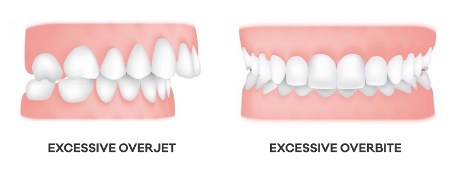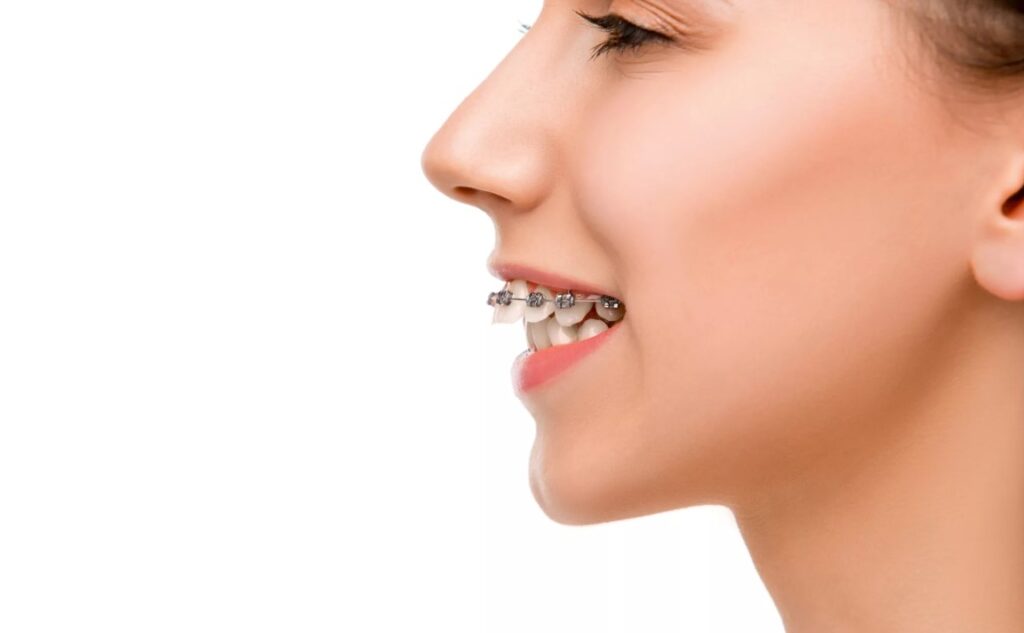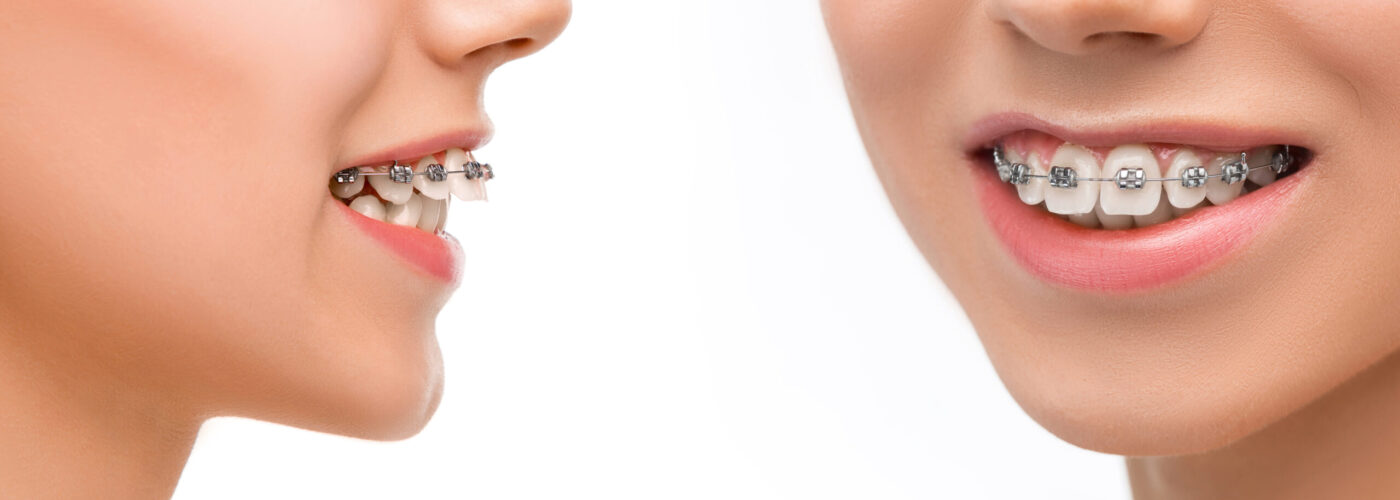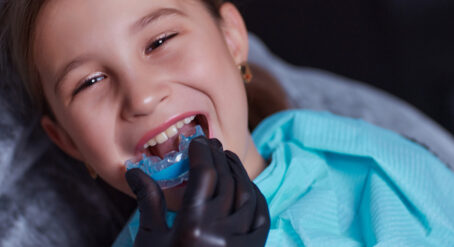Overbite and overjet problems are common orthodontic conditions. An overjet is often mistakenly called an overbite, but the two conditions are distinct. So today, we’re going to discuss the difference between the two as well as how your orthodontist can help treat it.
What is an overjet?
An overjet is characterised by the protrusion of the top front teeth. Commonly referred to as buck teeth, the condition is present when there is a prominent horizontal overlap where the top front teeth are too far forwards compared to the bottom front teeth. This protrusion puts individuals at a higher risk of knocking or chipping their front teeth, or prevent the lips from closing comfortably. The normal range for an overjet when the upper incisors are in front of the lower incisors is 1.5–2.5 millimetres. Any protrusion greater than that may indicate a problem.
What is an overbite?
While an overjet refers to a horizontal issue, an overbite refers to a vertical one. A deep overbite is when the top front teeth vertically overlap the bottom front teeth by more than one-third. In severe cases, the lower teeth may even touch the gum tissue behind the upper front teeth. In general, a normal range for an overbite is 2–3 millimetres. Any measurement greater than this may indicate a problem.

What causes an overjet?
Genetic and hereditary factors relating to jaw development can be a major cause of overjet teeth. Buck teeth (increase overjet) can also be caused by childhood habits that can push the jaw and teeth further out of line, such as extensive thumb sucking.
What causes an overbite?
The most common cause of an overbite is the position or size of the jaw or teeth, however the habits mentioned above can also exacerbate underlying genetic traits to increase an overbite.
Is it normal to have an overbite?
When it comes to an overbite, a small amount of overlap is normal and ideal for everybody. However, when this condition is pronounced, causes difficulty chewing or speaking or is leading to functional problems, then it needs to be addressed by a professional.
How do you know if you have overbite or overjet?
The main sign that you have an overbite is if your upper teeth overlap your lower teeth by more than one-third of the length of the bottom teeth. And for overjets, the obvious sign that you have one is if your front teeth prominently ahead of your bottom teeth. There are also some people who might have an overjet and overbite at the same time. If you have any of these physical signs of an overjet or overbite, it’s a good idea to chat to a specialist orthodontist to learn about your treatment options.
What happens when you have an overbite or overjet?
If left untreated, an overbite or overjet can cause significant health complications including:
- Jaw pain: A misaligned bite may contribute to chronic jaw pain and headaches.
- Difficulty speaking or chewing: An overjet can make proper chewing difficult, while also affecting your speech. You use your teeth, lips, and tongue together to create sounds which means you may have difficulty pronouncing some words when your teeth are very protruded.
- Sleep apnoea: People with large overjets are more likely to develop obstructive sleep apnoea, especially if their overjet is associated with a small set-back bottom jaw.
- Fractured teeth: Protruded front teeth are more prone to trauma, which can lead to fractures, chips or even teeth getting knocked out.
- Increased wear and tear: When you have an overbite, your teeth will often hit each other excessively during rest and function, causing enamel wear and tear, and shortening the length of the front teeth.
- Gum damage: In severe cases, the bottom front teeth can contact the gum line in the back of the top front teeth, while the top front teeth may strike the gum line of the bottom front teeth. This could result in gum recession, gum disease, and even wobbly loose teeth.
Overbites and overjets tend to be easier to treat in children and teenagers since a child’s jaw is still developing, but correction for these conditions is also common for adults.

Is an overjet easier to fix than an overbite?
While an overjet tends to be more complex to fix than an overbite, both issues can be treated with braces or clear aligners. After an examination, your orthodontist can diagnose the severity of your overbite or overjet and suggest the best method for correction. For most people that means plates, braces, or clear aligners, but sometimes, if the overbite or overjet occurs due to a malformed jaw, surgery may be required in which case your orthodontist will work with a specialist surgeon to fix the bite problem.
Use our Finder Tool to find a specialist orthodontist near you. They will help you make the right decision about how to treat your overbite or overjet.











